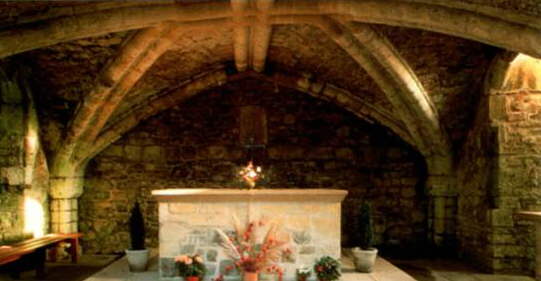Glastonbury: Ghosts of former monks helped with the excavation
about 350 years after Henri VIII destroyed the Abbey
(c) Guinevra 2007
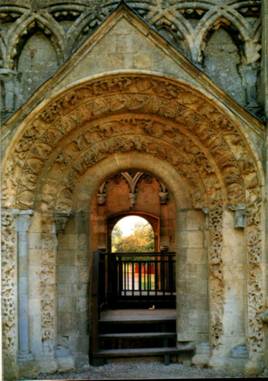
I
Besides giving you some dates and events for explanation, I do not intend to retell once more all the manifold history of Glastonbury Abbey. It is well known all over the world in documentaries or romantic fiction you can find it in any bookstore.
But besides the history there are legends and by far the most interesting modern one, is even omitted from the official guide booklet, one can buy in the Souvenir shop.
I photographed the list of abbots, who ruled Glastonbury wise and pious until Henry VIII in his greed destroyed the Abbey into disrepair.
It seems, Henry’s main motive for the dissolution of all Abbeys and monasteries was financial. He needed ever more money as he was a spendthrift. And when subjects have more wealth, as they do not squander it, but over many years with economical sound measures make a fortune, than the ruler gets angry, jealous and greedy. In the past as well as today. His “holy” office gave him the right to take all the wealth, earned wise and used economical by subjects, into his greedy hands. As the head of the British Church, not restricted anymore by the Pope, all the possessions of the church and the Abbey's “belonged” to him.
The wealth of the Church awakened the envy and greed of kings and they forgot, comfortable for their consciousness, that most Abbeys used their wealth to create and maintain jobs. Another example gave Philip the Beautiful of France, when he destroyed the Templar Knight Order, took their treasures, land and castles and so, like Henry VIII, he added to the already jobless and famishing people those, who were employed or helped in all these Abbeys.
The duties of the Abbeys since centuries were a counterweight against the greed and thoughtless acts of the ruling houses and their favourites. Each Abbey had a hospital, many had a guarded part for separating, housing and feeding leprosy ridden humans, they had herb gardens and added to the knowledge of healing. No abbey in Henri VIII times was the silent medication place we think of them today. The daily chores of nuns and monks covered the 24 hours of day and night.
Ora et Bora, pray and work.
Most of them obeyed that law and we can only respect and admire how much they achieved in such primitive conditions. Their own life was as harsh as the life of the people they helped. The orders laws saw to that.
Any one had his duties to work with the best of abilities from fieldworkers, to herbalists, healers and bibliotheca preserving the knowledge of past times. And even when the abbots and priors led a better life (outside) so it happened only, because they represented the abbey against the highborn guests and the kings and their escorts and trains, who visited the monasteries and Abbeys on their way crossing the country, using their hospitality, ever demanding the best, of course without paying, and after their departure they left the Abbey often without any food for the nuns, monks or their tenants, nearly ruined.
Abbeys were the most important pillars of a country in these times. Today we cannot even begin to appreciate the work they accomplished. If we exclude gentry and merchants almost too, the care for the population lay on their shoulders. Add that being employed or tenanted to an Abbey guaranteed, not comfort or luxury, but no worry for a roof over the head and no fear of famishing, even when the harvest was bad. Nearly all abbeys, and I include the different Knight Orders, were wise in restricting their spending and saving for worse times and in not working their tenants to death, because fed and healthy workers have better results.
Emperors, kings, their cronies as well as the big landowners behaved quite different. They lived in luxury, taxed their tenants and employees so high, that only less than necessary food was left. So all the caring for body, mind and soul and a little bit of normal life for poor people came from the Abbeys, nuns, monks and Knight Orders.
But their ordered life and economical use of their wealth brought them the envy and jealousy of rulers, gentry and big landowners. And in Henry VIII separation from Pope and catholic religion they saw the biggest opportunity of their life time to lay their greedy hands on the riches of the national church. So of course only few protested, when he began to sack Abbeys, expelled the inhabitants and their employees. Some abbots saw it coming and hid some of the sacred treasures of their churches, because these belonged to God. If such suspicions arose, the abbots, priors and who ever could know anything about the hiding of treasures was tortured, mostly to death as they often saw themselves as martyrs and refused answers about possible hiding places.
Even in our days some such hidden treasures are found, and I read some years ago about such a finding. It was a wooden cross with a silver plated Christ figure on it and a silver plated cup for Holy communion, showing the truth of history’s tales, that only some famous Abbeys were rich, the other lived not better and worked under the same harsh conditions as their tenants. But wealth has nothing to do with wisdom or knowledge, so the inhabitants of abbeys and their subjects at last received as much healthcare as the herbalists and some medicals could give them, something that was totally neglected outside the walls of Abbeys and monasteries. Many slaved farmer, working for an Abbey had better healthcare than the king and his family, the gentry and the mundane officialdom.
There were few doctors and their ignorance is beyond description, bloodletting was most the only cure they knew and people died because they consulted one of these so-called doctors.
The aftermath of Henry’s dissolving the cloisters were terrible. He started careful trying, with the small ones. First demanding an oath from all of them on him. The Act of Supremacy. Who refused it, whose abbey was dissolved. Most abbots swore the oath to save their Abbeys. But that wedded only his appetite. So real and invented sins of the clergy lead to accusations (some right, some wrong, it did not count) and more destroying and sacking.
The misery of the people living before under the shield and guard of the dissolved Abbeys was terrible. The nuns, monks, laymen, the old and the crippled, they all were hunted out into the nowhere land, that did not exist, they were trespassers in the whole country, to add to the ever growing number of home- and jobless people in King Henry’s Britain.
The movable treasures went into Henry’s possession, the land and the buildings he either sold or gave as reward to his gentry, to secure their alliance.
The tenants had to stay and work under ever harsher conditions for the new landowners, who were without mercy for the wellbeing of their workers, their “possession” at that time.
The Abbey’s, monasteries and churches buildings were mostly demolished by the new owners too; welcome material for building themselves new castles, manor houses and parks.
After that Henri VIII began the same game with the more wealthy and powerful Abbeys, whose abbots had all signed the Act of Supremacy. When he met with resistance he was merciless. As he without restrictions behaved against his wifes, family and possible enemies and true to his cruel, greedy and maybe mad character, he acted against the big Abbeys. He was like a bull running amok, as he found out, that there were not so many treasures in the hands of the church as he supposed. Besides the decorations of their churches, their real wealth lay in the wise use of the land and the workers.
About 1539 Glastonbury was his target. Glastonbury was very famous and the second wealthy Abbey in Britain (behind Westminster Abbey). On Glastonbury’s land the first Christian church of Britain was supposed to be built in the first century A.C.
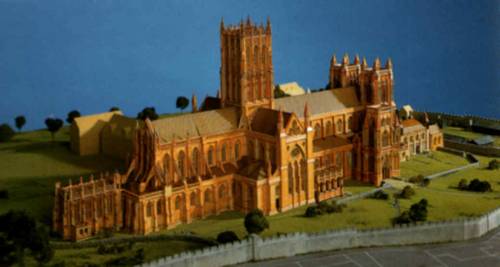
Added is the legend, lingering till today, that Joseph of Arimathea visited Glastonbury with the boy Jesus. Legend tells that he erected the first church on the site, where the abbey later stood. The same legend told, Joseph of Arimathea, obtained the Holy Grail as a memento of Jesus. Later he visited Glastonbury once more and buried the Grail on Chalice Hill, perhaps by the Chalice well. Legend tells too that Joseph arrived by boat at the hill and stuck his stuff into the ground, which blossomed and took root. The white thorn, ever taken from a previous one, is living in Glastonbury till to day.
As if that were not enough to make the place famous and rich, more legends were added. It was only a short step to connect the Pagan history of Glastonbury with the Christian one. The chore of the new Christian Abbey was the ancient cemetery around the Lady Chapel. The cemetery was used intense for a long time. And one of these graves was supposed that of King Arthur and his Queen Guinevra from the early 6th century. In 1191 this grave was opened and the remains removed into a shrine in the choir of the church.
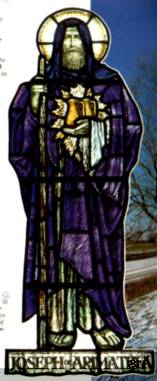

So the Abbey was the goal of many pilgrims and the beneficiary of many gifts, in heritages and income from visiting pilgrims, The Abbey was very economic and supplied most of the needs for a growing community.
Henry finished Glastonbury as a monastery with special brutality as he was disappointed. The Abbey neither gave him many treasures nor the Grail he was convinced the abbots hid there. So the Abbot Whiting after torture was found “guilty” of many “crimes” and executed at once with 2 of his monks. His head was placed for show on the Abbeys gateway, the body quartered and displayed in Bridgewater, Ilchester, Bath and Wells.
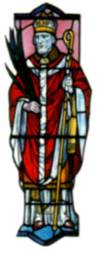
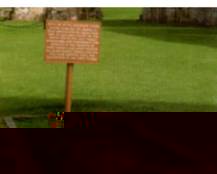
The Abbey was sacked and any item of worth was sold to the highest bidder.
So ended the history of one of Britain’s most holy places, Pagan and Christian; and during the next 350 years the site was depleted, the buildings destroyed, the stones used for the erection of new buildings for the growing city that surrounded the former Abbey.
1536 Britain had over 800 monasteries, 1541 none was left. More than 10 000 nuns and monks and uncounted other people were driven out.
Who convinced Henry VIII that the legends regarding Joseph of Arimathea could be true? Was he searching for the Holy Grail, which could not only heal wounds but give also eternal life?
The destroying of the Abbey was so brutal, that only rubble and stones littered the place, which once was a place of beauty and peace.
II
1901 the Church of England bought the mysterious place, paying 36 000 pounds of Sterling and pretended to have no information what these old ruins represented. Henry VIII demolition was continued during the following centuries? By whom? Later searchers looking for the Grail? No maps existed anymore, no memory where the important buildings stood, in which the monks once lived. Intended the Church of England to dig out the Holy Grail in the 20th century?
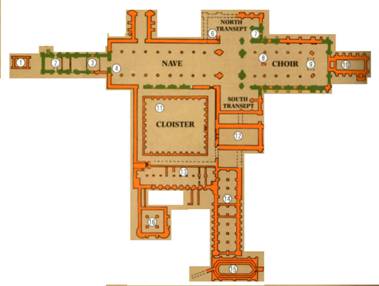
The Church of England ordered the reputable architect, Frederick Bligh Bond (1865 – 1945) to reconstruct Glastonbury as far as possible. He was the ideal man for this job. He was England’s leading expert regarding gothic architecture and known in different countries as a prominent restorator of churches.
The order was very tempting for Mr. Bond. But there were 2 serious problems. The first: Glastonbury’s spacious area needed extended and comprehensive excavations to find the subterranean foundation-walls. But there was not enough money to do that.
The second reason: Mr. Bond was given a second architect as Co-worker, who should preserve any stonework that was to be found. And this man was contraire to Mr. Bond, without scruples, only driven by the hope to make sensational discoveries, so that his fame and wages would outshine any other architect in connection with churches. And he did his best, to hamper Mr. Bond and slander his reputation. Mr. Bond received not nearly enough time and money to fulfil the order correct.
Since his early youth he was fascinated by esoteric wisdom and read occult books instead sharing the adventures of his classmates. On 7th November 1907 he met with John Alleyne Bartlett, a known medium of that time, and they began a “question hour with the other world beyond the veil”. Bond asked numerous questions and Bartlett in trance wrote down the answers. Both men were convinced that they contacted ghosts.
“Can you tell us something about Glastonbury?” was the first question. The answer: “Knowledge is eternal and is accessible to sympathy. I cannot find a monk at the moment”. Finally the monk Gulielmus answered. Using the medium he drew maps and ground-plans. Another ghost joined “Ego Johannes Bryant, monk and lapidator” (I am Johannes Bryant, monk and stone-mason).
Bond and Bartlett were very sceptical in the beginning. Was their own fantasy playing games with them? Provided the automatic writing only the answer they longed so to hear? Constantly they met and contacted the Otherworld and these monks. It seemed the ghosts had waited for centuries to give informations about the long vanished Abbey Glastonbury. Each thought could be important, each sketch bringing results. Even Abbot Bere, the predecessor of Abbot Whyting, whom Henri VIII murdered, came and added important informations. The informations grew to extensive proportions. Missing was “only” a test.
Bond received money in 1908 and started the excavations 1909 precisely at the places the monks had described. Outsiders saw nothing of the usual regularities in these excavations.
The result: Each information, each sketch, all was true. Eastside of the big Abbey they excavated the underground remains of a big chapel. In the West, precisely on the reported place, they found the foundations of 2 big Towers. Two long wall foundations were just underground at the place the ghost monks told Mr. Bond.
All the extended excavations at different places in the Glastonbury area were sensational successful. One result hunted the next. Even informations from the monks which seemed senseless, were found to be true.
Some examples:
“The vanished chapel was once 90 foot long!”
Objection: That was impossible big.
Fact: They found the chapel precise at the mentioned location, she was 90 foot long.
“The old church door was at the west-side and lead directly into the street!”
Objection: Doors at the west-side of a church nearly never were built.
Fact: The fundament showed, that this door at the Westside really existed.
“The window of the Edgar Chapel had once azure glass. Remains of that will be found during the excavation!”
Objection: In this time normally only white or golden glass was used for church windows.
Fact: Shards of azure glass were found.
A certain church roof the monks described in detail, mentioning the colours. “It was gold and crimson!”
Fact: That was also true.
Bond did not only excavate numerous fundaments, which were forgotten for centuries. The monks, who called themselves the “Otherworld Guards”, gave much information about the history of the Abbey. Alone with these historical facts, at that time unknown, one could fill a whole book. All underwent examination. That was a time consuming task, but all was confirmed by old scripts
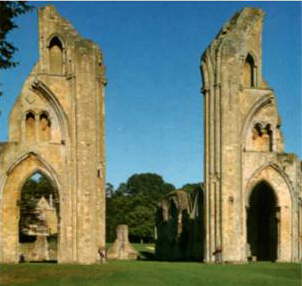
Bond was excited with his extra-ordinary success. He had fans all over England. But of course, he had enemies too. Archaeologists all over the country envied his “easy” results.
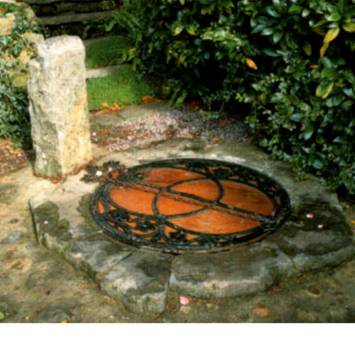
He was a very honest man and had a conscience. He was ashamed that he received all the fame and honours he had these monks to thank for. Additional he was convinced, other excavators could reach the same success if they contacted with the help of a medium the ghosts of the places they interrogated.
He began to write a book about his history of excavating Glastonbury. 1916 he spoke before the “Somerset Archeological Society”. He repeated the most important message of the “Guards from the Otherworld”. Coded in a secret numerology the Abbey contains age old cabbalistic Wisdom. He referred to connections between words and numbers.
The result was terrible, a disaster for this honest and successful man. Esoteric Wisdom hidden in a Christian Abbey? Archaeology and Clergy turned horrified their backs on him.
1918 he published the history of Glastonbury in his book “The Gate of Remembrance”. Science and Clergy reacted quick and united. They humiliated and slandered him. His research funds were reduced to a minimum as well as his wages, down to 10 pounds per month. At last he was forbidden any excavation and was forced to catalogue old findings. 1922 they fired him and he was never permitted anymore to enter Glastonbury.
1937 a group of Americans obtained a licence to excavate in Glastonbury with their own funds. But when Officialdom found out, that Mr. Bond worked as adviser for the Americans all the permissions were declared as not valid anymore.
Embittered, impoverished and forgotten Frederick Bligh Bond died 1945.
“Frederick Bligh Bond,
Designer of the symbolic well cover and the Abbey’s first Director of Excavation was dismissed in 1922 for his interest in psychic phenomena.”
These are the only words mentioning the name and work of the man in Glastonbury’s visitors guide booklet in the smallest possible script; whose story I intended to tell here. A strange story, a nearly unbelievable story, but in my opinion nevertheless a true story.
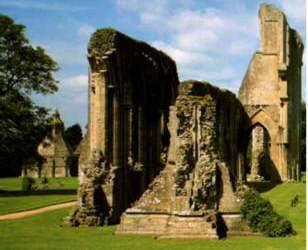
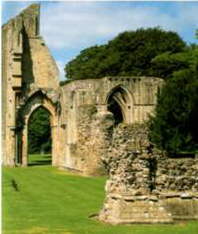
Please permit me to get a little bit sentimental. I hope he had ample time now to continue the discussions about Glastonbury with the former inhabitants and is so able to know all the secrets of Glastonbury; we are not permitted to learn till today.
Or will there be in the future maybe another medium together with a strong hearted person try to solve the enigma of this English miracle place???
